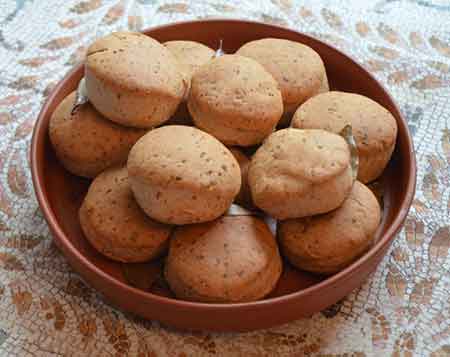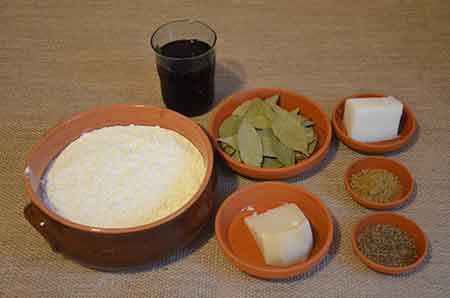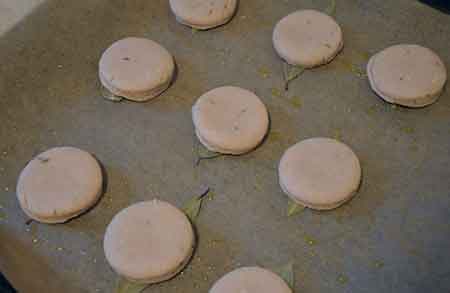Recipe for Mustacei
(Wine Cakes)

by Cato, De Agricultura 121

Roman Cookery: Ancient Recipes for Modern Kitchens.
Yes, this book has a new cover, but I like this one better. Blah, I am so horrible.
Whilst updating recipes, I found this article on a great site called "FOLLOWING HADRIAN" and really, why re-invent the wheel? Please, check out this really great website!
Here's what the site author had to say about it: For the appetizer (gustatio) I chose to bake Mustacei, must (grape juice) cakes from Cato The Elder's De Agricultura. The recipe I used is taken from Mark Grant's Roman Cookery as well as Sally Grainger's The Classical Cookbook with some slight modifications. The recipe is slightly adapted using modern ingredients like yeast as the must of the Romans would have fermented. Sally Grainger believes that Cato's cook experts would have expected the cakes to rise.
Original recipe: Mustaceos sic facito. Farinae siligineae modium unum musto conspargito. Anesum, cuminum, adipis P. II, casei libram, et de virga lauri deradito, eodem addito, et ubi definxeris, lauri folia subtus addito, cum coques.
Translation: Moisten 1 modius of wheat flour with must; add anise, cumin, 2 pounds of lard, 1 pound of cheese, and the bark of a laurel twig. When you have made them into cakes, put bay leaves under them, and bake.

Wine Cakes (Mustacei) ingredients

Ready to bake
Ingredients
- 400g plain flour
- 200ml red or white grape juice (I used red grape juice)
- 1/2 tsp dried yeast
- 60g cheddar or pecorino cheese, grated (I used pecorino)
- 2 tsp ground aniseed
- 2 tsp ground cumin
- 60g pastry lard (cooken) or hard vegetable fat (I used cooken)
- olive oil
- bay leaves
Preparation
- Pour the grape juice into a pan and warm it to body temperature.
- Dissolve the yeast in the grape juice and leave to froth a few minutes.
- Grate the cheese.
- Put the flour into a mixing bowl and stir in the ground cumin and aniseed.
- Add the grated cheese and lard/vegetable fat and work them into the flour until it has the consistency of bread crumbs.
- Pour on the grape juice and yeast mixture.
- Knead for 5 minutes until you have a supple dough and roll into a ball.
- Cover the bowl with a damp tea towel.
- Now brush a baking tray with olive oil and position the bay leaves on it at 5 cm intervals.
- Flour a board.
- Place the ball of dough on the board and use a rolling pin to roll out the dough until it is 1 cm thick.
- A pastry cutter about 5 cm in diameter can be used to make the individual cakes.
- Place each cake on a bay leaf and bake them at 180°C for 30-40 minutes.





















